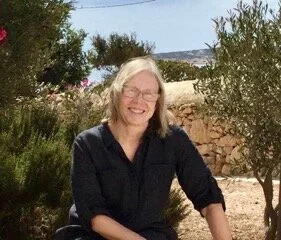Patricia Behrens on “New York City Field Notes: Spring 2020”
At 18 years old I left the small town in coastal Massachusetts where I grew up and came to New York City to go to college. I fell in love with the city and never left.
In the spring of 2020, New York City became the epicenter of the new Covid-19 virus. Many residents fled. Those who stayed sheltered in place in a locked-down city with lives suddenly frozen in place.
Illness and death affected our friends and neighbors and entered the apartment buildings where we lived. People lost jobs. We worried about how bad things might get. Ambulance sirens were constant. Their howling was like wind that died down occasionally but never entirely went away. I could forecast the next day’s death numbers by how the sirens sounded outside my windows.
During this time the city was also eerily beautiful.
Except for the sirens, the city was quiet, stripped of its usual constant noise. Central Park West outside my door was free of traffic, as if it had been cleared for a parade. The air was fresh—light and clean.
People talked about the sound of birds in the parks, which, suddenly, we heard. We wondered: had the birds always been there? Had their sound simply emerged as the usual city noises receded? Or were they part of a new influx of wildlife drawn by our now more natural city? We speculated about it; no one seemed to know.
Deprived of my usual exercise at gyms and pools, I walked the city. Tourist sights that I had never imagined seeing without people—Times Square, Bethesda Fountain—stood almost empty. And I thought, someday, when we look back on this time, we will not only remember the anxiety and grief, we will also celebrate these moments of beauty.
But we weren’t able to talk about them at the time—at least I wasn’t—because it felt wrong to celebrate anything, except for the clapping at 7. Then the whole city would briefly come together at open windows to clap and bang pots and pans and ring bells in shared recognition of healthcare workers and other essential workers. The 7 o’clock ritual gave structure to our days.
The poem “New York City Field Notes: Spring 2020” was written during this time about this time, in an early effort to grapple with its contradictions.
The poem doesn’t try to come to terms with them—for me, and for many others, I suspect, this will need to come later or perhaps not at all. It is just meant to be, as the title says, among the field notes.
And it also should be said that the cherry trees that appear in the poem are themselves hardy city survivors. Some say that they include one or two gnarly centenarians that date back to Japan’s 1912 gift of Yoshino cherry trees to the United States.
.
